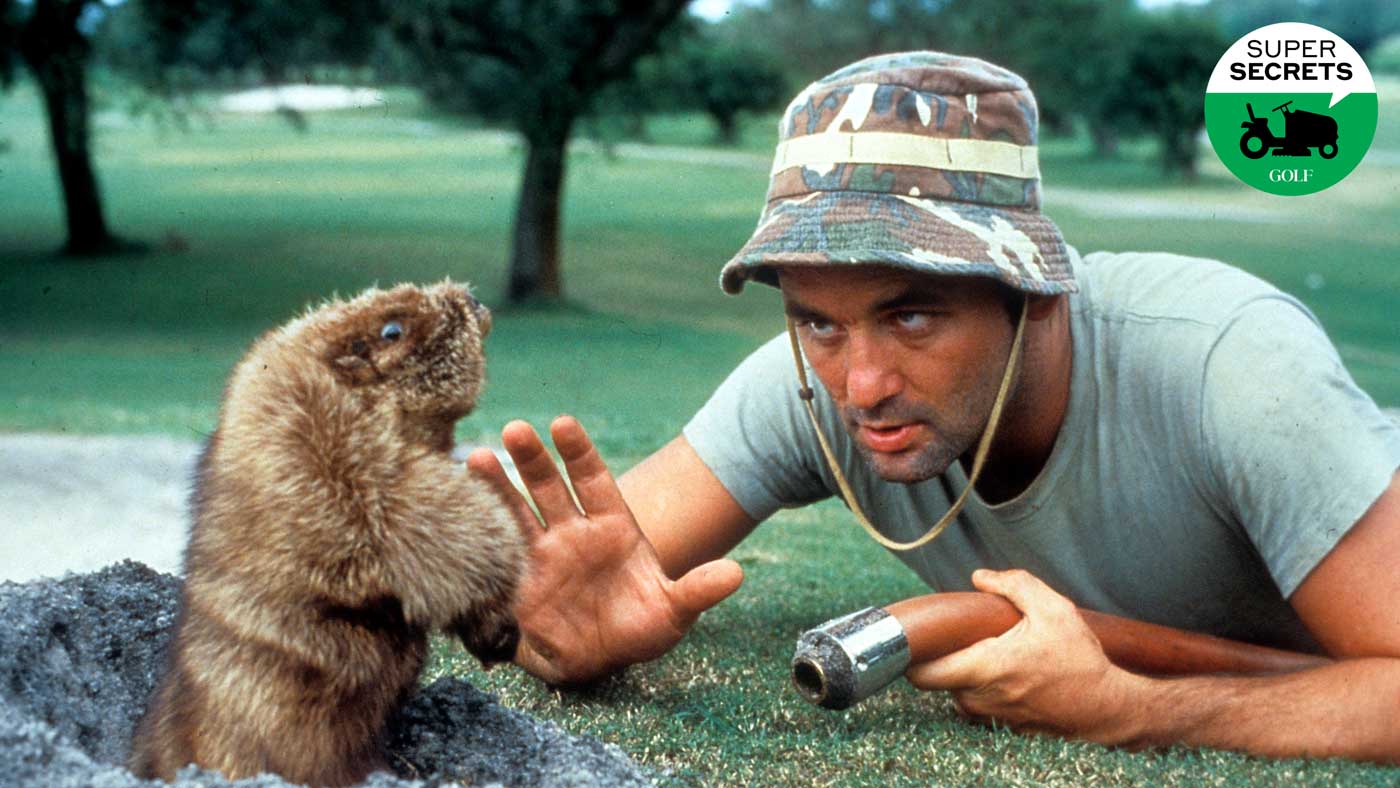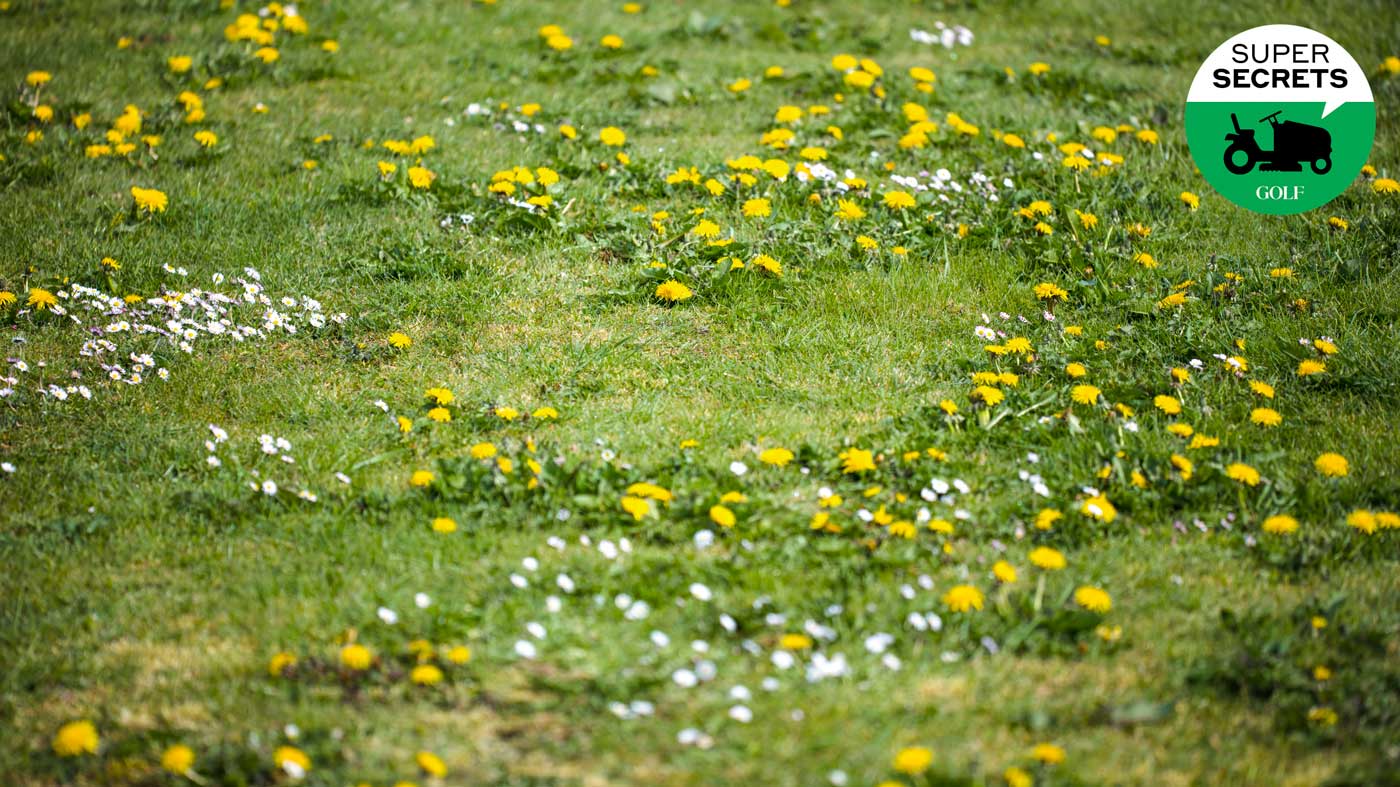“Caddyshack“ stereotypes notwithstanding, superintendents are a brainy bunch. Their work requires it. You’ve gotta know things. Would you have the mental game for it? As a baseline measure, here’s an entry-level professional exam.
Answer key is below.
1. The diameter of a standard golf hole is:
a. 4 inches
b. 4 1/2 inches
c. 4 1/4 inches
d. 4 3/4 inches
e. Not wide enough for most of us
2. The grass varietal found on traditional links courses is:
a. Poa
b. Bentgrass
c. Zoysia
d. Cannabis sativa
e. Fescue
3. In superintendent slang, a “stick licker” is:
a. A shot that hits the flagstick
b. A bad golfer
c. A staffer who wipes down golfers’ clubs
d. A machine used to repair flagsticks
e. A tree-eating beetle
4. A hole location is considered illegal if:
a. It is cut within three paces of the collar
b. It is cut within four paces of the collar
c. It is cut on a portion of the green with more than 7 degrees of slope
d. Enough golfers gripe about it
e. There is no such thing as an “illegal” hole location
5. Dollar spot is a term for:
a. The worn mark that develops at the bottom of a plastic cup liner
b. A ball marker with JFK’s image on it
c. A retail store where everything costs 99 cents
d. A fungal disease in turf that shows up as spots approximately the size of a silver dollar
e. How much you owe when you lose by 1 in Skins
5 reasons your lawn is ugly (and how to fix it!), according to a superintendentBy: Josh Sens
6. In superintendent slang, a “sweater folder” is:
a. A sod-laying machine
b. A sod-removing machine
c. A specialized bunker rake
d. A golf professional
e. A granular fertilizer with a cottony look.
7. All of the following are examples of cool-season grasses except:
a. Perennial ryegrass
b. Bentgrass
c. Tall fescue
d. Zoysia
e. Buffalo grass
8. Superintendents call frost delays to:
a. Keep you from slipping
b. Keep you from catching a chill
c. Give maintenance workers time to cut cups and mow greens
d. Annoy you
e. Prevent the frozen cells of grass blades from shattering under the weight of foot and machine traffic
12 golfer habits that *really* annoy superintendents, according to superintendentsBy: Josh Sens
9. When superintendents talk about the one-third rule, they are referring to:
a. The percentage of water lost to evaporation when greens are irrigated at the hottest time of the day
b. The rate in inches at which grass grows in normal climatic conditions over the course of a week
c. The percentage of golfers who are pretty much guaranteed to complain about something during the course of a round
d. The maximum percentage of a grass blade that should be cut in a single mow
e. The ideal differential in mowing height between a fairway and a green
10. Evapotranspiration refers to
a. The process through which turf absorbs moisture from the air
b. The process through which waters moves moves from the ground into the air
c. The dewy film that develops on greens on warm mornings in cool climates
d. Water loss in an inefficient irrigation system
e. Beads of sweat on Stewart Cink’s pate
11. When superintendents talk about the “transition zone,” they mean…
a. The mown area of a fairway leading up to a green
b. The mown path between a tee and a fairway
c. The middle third of the U.S. where warm and cool-season grasses overlap
d. The several-week period during shoulder seasons when grass requires the most care
e. The trampled area between a cart path and a fairway
9 things we saw, heard and learned at the golf-course superintendents’ trade showBy: Josh Sens
12. When a green measures “10” on the Stimpmeter, that means…
a. It is in perfect condition
b. Its grass has been cut to one-tenth of an inch.
c. You are probably going to 10-putt
d. A ball set in motion from an inclined 36-inch metal chute rolls out at a speed of 10 inches per second
e. A ball set in motion from an inclined 36-inch metal chute rolls a distance of 10 feet
13. The Stimpmeter was invented by…
a. A skilled amateur golfer named Edward Stimpson
b. A gruff greenskeeper named Stimpy Stimpson
c. A journeyman golf pro named Dan Stimp
d. A golf-course owner named Randolph Stimpson
e. A nuclear-power plant employee named Homer Stimpson
14. According to a 2021 survey by the Golf Course Superintendents Association of America, the average salary for a superintendent at a public daily-fee course was…
a. $67,000
b. $77,000
c. $87,000
d. $57,000
e. Double that of the average golf writer
Answer key: 1. c 2. e 3. c 4. e 5. d 6. d 7. d 8. e 9. d 10. b 11. c 12. e 13. a 14. b
0-3 correct: You’re playing too much tennis
4-6 correct: You know your poa from your pampas
7-8 correct: We’re guessing your yard is the envy of the nieghborhood
9-10 correct: Bushwood would hire you tomorrow













